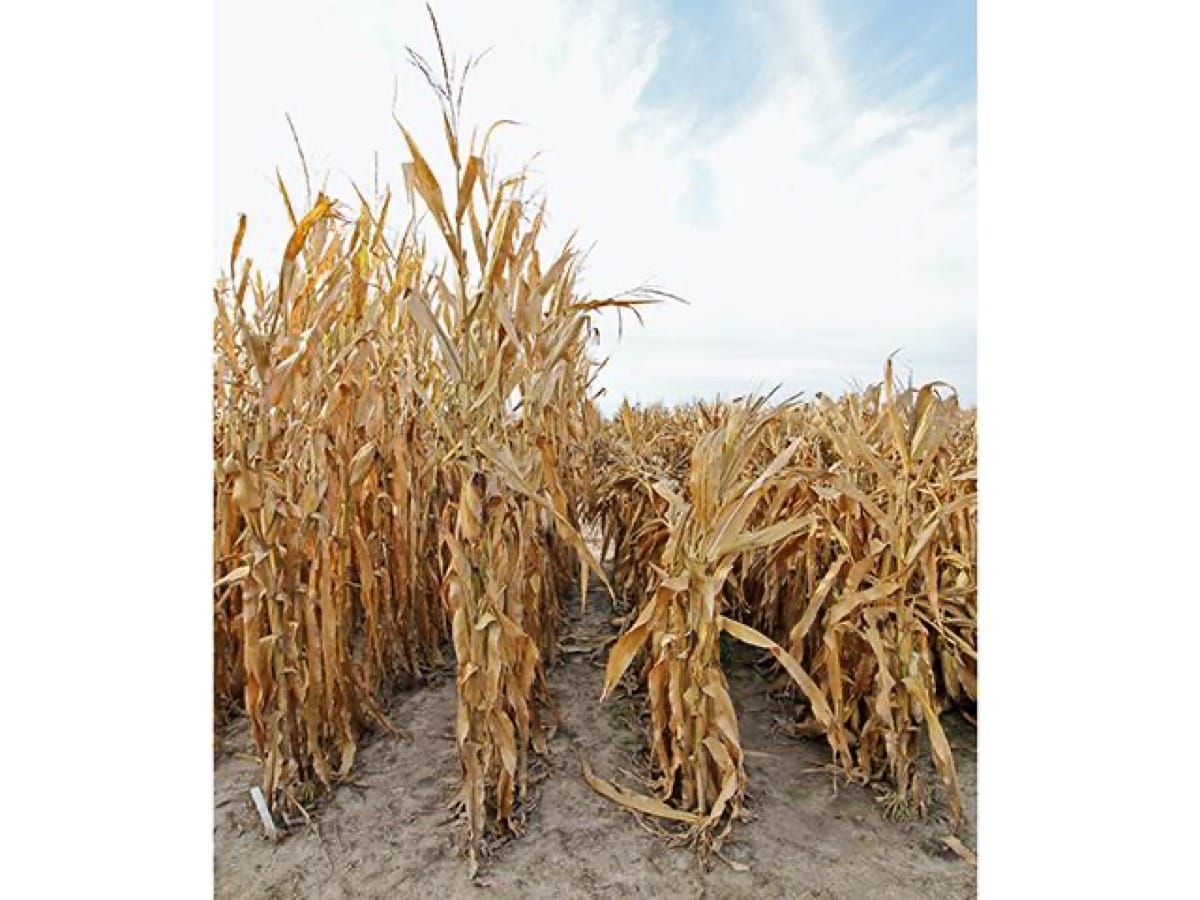
High Hopes for Short Corn: Short-stature hybrids aim to fit fields of the future
by Pamela Smith, Iowa Corn
DECATUR, Ill. (DTN) — Picket fence stands of hybrid corn towering skyward could take on a different look in coming years. Suddenly, short is where it’s at, at least for Bayer Crop Science.
Hybrids that are about a third to half in height with an ear that sets about knee high are already being planted in Mexico under the brand name Vitala. The company is pushing the concept through its U.S. pipeline both in traditional breeding and genetic engineering platforms with the first commercialized products expected early to mid-decade.
The idea is to create hybrids that potentially use fewer resources and are easier to spray postemergence. Shrinking the corn plant is also expected to help the currently lanky corn plant better withstand windy challenges, such as the derecho that cut through Iowa and parts of Illinois in 2020.
SMALL GROWS UP
Introducing dwarf traits into crops is not new to agriculture. Norman Borlaug used the tactic to make wheat more resilient and efficient. Plant breeders have also shortened rice, barley and other grains to gain efficiencies.
Nor are efforts to reduce corn’s size necessarily new. Stine Seed Co., for one, began working on short-stature hybrids in the mid-1990s. “Higher-density planting was really the desired outcome,” said David Thompson, Stine Seed director of marketing. “As we continued down the path toward higher density, our best hybrids were tending to get shorter along the way.
“As a result, since 1995, our average hybrid height at Stine has dropped by almost a foot and a half,” he said. “We have been passionately promoting this concept for more than a decade. We believe shorter-stature corn is the future of corn farming.”
VIEW FROM THE FIELD
Short-stature varieties are easy to spot at Bayer’s research farm, outside of Jerseyville, Illinois. Imagine the field as a basketball court with a 6- to 7-foot-tall point guard standing next to a 10- to 11-foot-tall shooting forward.
Erase images of spindly popcorn or sweet corn, or sickly droughted corn, too. Short-stature corn is simply shorter, said David Mack, Bayer short corn R&D project lead. “There is a shorter space between the internodes, which reduces the plant height.”
Bayer is using several different approaches to reduce these spaces. The first relies on conventional breeding methods where genes are bred into a plant. A biotechnology version places a gene inside the plant to regulate the internode length. In 2020, the company announced it is also working on a gene-editing approach.
Kelly Gillespie, Bayer crop efficiency portfolio manager, noted that reduction in plant height does not reduce overall biomass or influence ear size. The company is testing short-stature corn for digestibility and other silage characteristics, which are particularly important in the European market.
“One of the advantages of having a global research and development organization is that we have a big testing footprint and can share those insights, which is important in developing the product concept,” she said.
Corn height is naturally influenced by stress and many environmental situations, even by planting date. “One thing we are looking carefully at is what happens to short corn in tough environments.
“Likewise, we also know we are compressing the canopy and changing the environment in the canopy. So, just like in our standard pipeline, we want to be sure we are not adversely affecting our disease ratings,” Gillespie continued.
She said initially, Bayer is testing short corn at the same densities as standard populations. One key consideration is making sure ears set at least 24 inches from the soil surface and slightly more if the hybrid is being grown in regions with rolling terrain.
“One of the things we are working really hard at is making sure this system does not require special machinery,” Gillespie said. University collaborations are currently looking at water-quality improvements and greenhouse gas reduction assessments of short corn.
BIG IDEAS BEHIND SHORT CORN:
Sustainability is the big word thrown around when seed-company talk turns to short-stature corn. Boiled down, that means doing more with less. Here are five advantages that farmers could see when short corn finds its way to the field:
— Seeds can be planted more closely together, producing more on the same amount of land.
— Under limited water conditions, plants with the native short-stature trait have shown reduced signs of stress.
— Farm equipment can clear the crop much later in the growing season, allowing more precise and efficient application of nutrients and fungicides.
— Short and stout should make the crop less susceptible to in-season crop loss because of standability issues, green snap and lodging, particularly in extreme weather events.
— No special machinery is needed to use the technology.